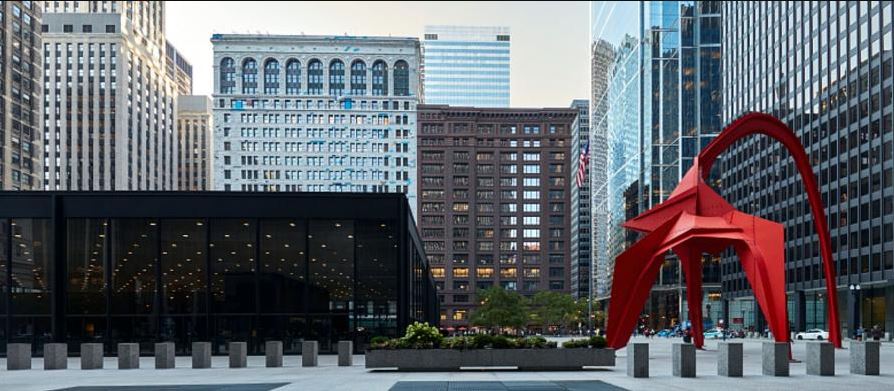NEA, GSA partner to expand federal art commission opportunities for artists who reflect the nation’s diversity

NEA to host September webinars for artists to learn more about upcoming public art commissions

The National Endowment for the Arts (NEA) and the U.S. General Services Administration (GSA) are collaborating to increase awareness of GSA’s Art in Architecture Program and to promote federal art commission opportunities for artists that reflect the diversity of communities across the nation. Both agencies share a commitment to advancing equitable opportunities for artists, resulting in federal art commissions that are accessible to the public.
The National Endowment for the Arts is proud to serve as a national resource that helps to bolster opportunities for artists in this country. The Art in Architecture program is a powerful and prestigious way to showcase the breadth of our nation’s creativity and talent in federal buildings throughout the country. I encourage artists to learn more about the program and consider joining the National Artist Registry.
NEA Chair Maria Rosario Jackson, PhD
We’re excited to partner with the National Endowment for the Arts to bring our Art in Architecture commission opportunities to a broader audience of American artists. The pieces in our collection inspire both our employees and the taxpayers who visit our federal facilities, and it’s important we ensure they reflect the diversity of America’s vibrant arts communities. We want to make this program as easy and accessible as possible for artists to join.
GSA Administrator Robin Carnahan
The Art in Architecture program oversees the commissioning of artworks for GSA-controlled federal buildings nationwide. In the fall of 2022, the program is launching 26 federal percent-for-art commissions in 11 states along the northern and southern borders, funded by the Bipartisan Infrastructure Law. During September, the NEA will host four webinars about these opportunities, each focusing on a different region where there will be new commissions:
- Tuesday, Sept. 13 at 1:00 p.m. ET: New York and New England (12 projects)
- Thursday, Sept. 15 at 1:00 p.m. ET: Upper Midwest (3 projects)
- Tuesday, Sept. 20 at 1:00 p.m. ET: Southwest (5 projects)
- Thursday, Sept. 22 at 1:00 p.m. ET: Pacific Northwest (5 projects)
These webinars will provide more insight into the history and goals of the Art in Architecture program and what artists selected for commissions should expect, as well as the process for joining the National Artist Registry, which allows artists to be considered for upcoming projects.
As we prepare to celebrate the 50-year history of GSA’s Art in Architecture program, we embrace our new collaboration with the National Endowment for the Arts and their relationships with arts organizations and artist communities. The webinars NEA is hosting next month about the 26 land ports of entry commissions in 11 states are the first step we’re taking together under our collaboration to reach artists who may never have heard about the program or thought projects like these were within reach.
GSA Public Buildings Service Commissioner Nina Albert
The Art in Architecture artworks enhance the civic meaning of federal architecture and showcase the vibrancy of American visual arts. GSA reserves one-half of one percent of the estimated construction cost of each new federal building or modernization for an Art in Architecture commission — a contractual agreement with an artist to create a site-specific, permanently installed artwork as part of the building project. Artist candidates for Art in Architecture commissions are most often identified from the National Artist Registry, which is a database of artists who have previously submitted digital images of their past portfolio work.
This fall, GSA Administrator Robin Carnahan and NEA Chair Maria Rosario Jackson will participate in a video discussion about the 50-year history of the Art in Architecture program and the significant role of public art in our country. Follow the NEA and GSA on social media for more information.
GSA’s Art in Architecture Program was created in 1972 and has commissioned more than 500 artworks by American artists, pieces that are permanently installed in federal buildings throughout the United States.
